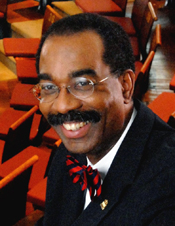 What’s on my mind this month is how dramatically we recovered this year from the devastation of sequestration in fiscal year 2013, but how much more we wish to accomplish before we close the books in 2015.
What’s on my mind this month is how dramatically we recovered this year from the devastation of sequestration in fiscal year 2013, but how much more we wish to accomplish before we close the books in 2015.
As my 2014 State of the School Address emphasized, we made significant progress in all our mission areas—education, research and clinical care—thanks to the incredible efforts, dedication and commitment of our entire School of Medicine community to the goals of Vision 2020. Some of our notable accomplishments in FY 2014 included:
- Total SOM research grants and contracts of $400.2 million, up 8% over FY 2013
- The School of Medicine has identified a goal of interdisciplinary research as part of its future.
- SOM clinical revenue of $278.7 million, up 8.4% over FY 2013
- SOM applications at record level (nearly 5,000)
- TPhilanthropy at 81% toward our campaign goal of $500 million in FY 2015
Vision 2020 was intended to be a spring board, and a way to change our growth trajectory over the next six years. Based on the successes of our past, we developed this strategic vision to propel us into the future. We appointed champions to head resource advisory groups, composed of our senior faculty leaders: William Regine, MD, chair of the clinical resources advisory group; Margaret McCarthy, PhD, chair of the research resources advisory group; and George Fantry, MD, and Dudley Strickland, PhD, co-chairs of the education resources advisory group. All resource advisory groups have met and provided important strategic initiatives to achieve their respective goals. However, Vision 2020 is an iterative, active process. We didn’t just set goals to simply achieve them, but to surpass them, and I am confident that we will outperform ourselves in FY 2015.
However, we are not “out of the woods” just yet. As the midterm elections proved, the tides are changing in both Washington, DC, and in our State legislature. Currently, the NIH and other science agencies are operating under a continuing resolution, set to expire in December. It’s unclear where the funding for biomedical research will fall on the list of priorities for the new Congress. Many of us were buoyed by the launch of the “21st Century Cures Initiative” in the House of Representatives, and the “American Cures Act,” which was co-sponsored in the Senate by Maryland’s own Barbara Mikulski. This legislation would augment federal appropriations with a mandatory trust fund dedicated to steady growth. If passed, the American Cures Act would increase annual funding for federal agencies at a rate of GDP-indexed inflation, plus 5 percent.
My fellow dean at Johns Hopkins, Paul Rothman, MD, and I, in a singular effort, and separately with my academic medicine dean colleagues at the AAMC, co-authored opinion pieces to stimulate others to rally around initiatives aimed to preserve America’s leadership in discovery-based medicine. Medical science is entering a powerful new era of discovery, with technology enabling huge advances in disciplines such as metabolomics, proteomics and epigenetics. Already we are taking a fresh look at how we operate, beginning with the training of young scientists, maximizing translational efforts and industry partnerships and promoting team science. As our new government leaders take their places, we must call upon them to demonstrate a commitment to sustained, robust financial support that matches the unprecedented scientific opportunity at hand.
I enthusiastically applaud the work of our faculty, staff, trainees and students in recovering from the losses of last year—we have much for which to be proud. However, we cannot simply rest on our laurels or become complacent. In this academic year, we must turn our attention to the charge of Vision 2020 to take bold, selective, strategic and opportunistic actions, which will allow us to thrive in the year ahead.
In the relentless pursuit of excellence, I am
Sincerely yours,
E. Albert Reece, MD, PhD, MBA
Vice President for Medical Affairs, University of Maryland
John Z. and Akiko K. Bowers Distinguished Professor and
Dean, University of Maryland School of Medicine
2014 State of the School of Medicine
In the 20th annual State of the School address, E. Albert Reece, MD, PhD, MBA, Vice President for Medical Affairs at the University of Maryland, and the John Z. and Akiko K. Bowers Distinguished Professor and Dean of the School of Medicine, emphasized the need to link basic scientific and biomedical research to practical applications that are useful to patients, society and industry. The theme of the presentation on October 22 was “From Vision to Venture.”
The school is making “tremendous progress toward our ambitious goals,” said Dean Reece. Speaking to a standing-room-only crowd, he proudly announced that grant funding had bounced back from decreases linked to sequestration. For FY 2014, the school was awarded $400.2 million in grants, an eight percent increase from FY 2013. “I am very excited to tell you that we have rebounded,” he said, noting that University of Maryland School of Medicine (UM SOM) grant funding was ranked eighth in the country among all public medical schools.
Dr. Reece also spoke about the school’s five focus areas: education, research, clinical care, community impact and global outreach.
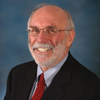 He cited the impressive work of many faculty, including Myron Levine, MD, DTPH, the famed vaccine researcher who is currently working to test an Ebola vaccine. Dr. Levine, Director and Co-founder of the Center for Vaccine Development (CVD), which celebrated its 40th anniversary this year, is also a Professor in the Departments of Medicine, Pediatrics, Epidemiology & Public Health, and Microbiology & Immunology at the UM SOM, and currently has a $25 million grant to study and test vaccines. The Ebola vaccine and CVD’s participation in the trials was UM SOM’s top media story of the year.
He cited the impressive work of many faculty, including Myron Levine, MD, DTPH, the famed vaccine researcher who is currently working to test an Ebola vaccine. Dr. Levine, Director and Co-founder of the Center for Vaccine Development (CVD), which celebrated its 40th anniversary this year, is also a Professor in the Departments of Medicine, Pediatrics, Epidemiology & Public Health, and Microbiology & Immunology at the UM SOM, and currently has a $25 million grant to study and test vaccines. The Ebola vaccine and CVD’s participation in the trials was UM SOM’s top media story of the year.
 Dean Reece noted, as well, that it was the 30th anniversary of when Robert Gallo, MD, Director of the Institute of Human Virology and the Homer & Martha Gudelsky Distinguished Professor in the Department of Medicine, co-discovered HIV as the cause of AIDS. Soon after that discovery, Dr. Gallo and his colleagues developed a blood test for HIV, enabling healthcare workers to screen for the virus. Dr. Reece also mentioned James S. Gammie, MD, a Professor in the Department of Surgery, who has invented a device that may allow repair of heart valve defects without opening the chest or stopping the heart.
Dean Reece noted, as well, that it was the 30th anniversary of when Robert Gallo, MD, Director of the Institute of Human Virology and the Homer & Martha Gudelsky Distinguished Professor in the Department of Medicine, co-discovered HIV as the cause of AIDS. Soon after that discovery, Dr. Gallo and his colleagues developed a blood test for HIV, enabling healthcare workers to screen for the virus. Dr. Reece also mentioned James S. Gammie, MD, a Professor in the Department of Surgery, who has invented a device that may allow repair of heart valve defects without opening the chest or stopping the heart.
Dean Reece emphasized the school’s continued focus on working on “Big Science” problems—those that require broad collaboration across disciplines. He specifically pointed out the School’s Brain Science Research Consortium Unit, which seeks to understand complex issues relating to the brain, such as neuroinflammatory diseases.
Dean Reece also pointed to the vibrant UM SOM clinical practices, which grew more than five percent between 2008 and 2014. Last year, he noted, UM SOM physicians saw more than 1.2 million patients. Faculty will also soon be seeing patients in a new Executive Health Program, catering to leaders who want one-stop health care, and next year will open the Maryland Proton Treatment Center, which will offer innovative care for many kinds of cancer.
He referred back to the plan he announced at last year’s address, Vision 2020, which encompasses both the University of Maryland School of Medicine and the University of Maryland Medical System. “I am delighted to report that this bold and strategic vision is coming steadily into focus,” he said.
The success of the School of Medicine was also reflected in the support UM SOM received from generous donors during FY 2014. Philanthropy increased by four percent, and included eight endowed professorships, which are vital in helping the UM SOM retain talented faculty.
Looking ahead, Dean Reece was confident that discoveries at the UM SOM are going to significantly change the direction of scientific research and healthcare. He sees our faculty and staff growing their reputation for working collaboratively, in multi-disciplinary teams, at unprecedented levels. “We will be unquestionably the leader in clinical destination and magnet centers of excellence,” he promised.
Medical Family Day
Medical Family Day was held on November 6, 2014 at the Hippodrome Theater. This special event, which was sponsored by the Whiting-Turner Contracting Company, gives family members of first-year students a glimpse into what medical school is really like for the students. It is capped off by a ceremony welcoming the students to the field of medicine by presenting them with their first white coat. “The White Coat Ceremony is a rite of passage. It symbolizes the beginning of your transition into the noble and privileged profession of medicine,” said E. Albert Reece, MD, PhD, MBA, Vice President for Medical Affairs, University of Maryland, and the John Z. and Akiko K. Bowers Distinguished Professor and Dean, University of Maryland School of Medicine. “It is, however, so much more than a mere ritual for the privileged. For, to whom this great honor and privilege is given, your service, compassion and high ethical standards are expected in return.”
Greg Lessans, President of the Class of 2015, spoke about what the white coat means to a student. “You’re proud that you have made it this far, but excited and nervous about the unknown that lies ahead,” he admitted. “It’s impossible to summarize all the feelings that come with getting that coat with your name sewn into it for the first time.” Among those feelings are pride, doubt and responsibility, all of which will overwhelm students as they learn how to make their way from student to doctor. “So welcome to the University of Maryland family.” Greg added. “And it truly is a family. We are happy to be able to celebrate this day with our new family members and welcome them to the proud tradition of medicine.”
 Kathryn Hart, MD, Assistant Professor, Department of Family & Community Medicine, was chosen to be the faculty speaker at the event. A 2008 alumna of the School of Medicine, her presentation included a photo from the day 10 years ago when she received her first white coat. She admitted she had not felt worthy of the coat yet, but her older brother, already a physician, told her not to worry. “That’s why they call it the practice of medicine, he told me, because you will be practicing it for the rest of your career.” Dr. Hart also admitted she was still humbled by how much information is out there and how much she still has to learn. “But that is what is exciting about medicine,” she said.
Kathryn Hart, MD, Assistant Professor, Department of Family & Community Medicine, was chosen to be the faculty speaker at the event. A 2008 alumna of the School of Medicine, her presentation included a photo from the day 10 years ago when she received her first white coat. She admitted she had not felt worthy of the coat yet, but her older brother, already a physician, told her not to worry. “That’s why they call it the practice of medicine, he told me, because you will be practicing it for the rest of your career.” Dr. Hart also admitted she was still humbled by how much information is out there and how much she still has to learn. “But that is what is exciting about medicine,” she said.
The White Coat ceremony, which started at the School of Medicine in 1997, formally presents first-year students with their white coats, long the symbol of physicians and scientists, after they have completed their first course in medical school—Structure and Development (aka Anatomy). The coats are put on by School of Medicine faculty, to welcome their junior colleagues to the profession of medicine.
Once they received their coats, students recited an oath acknowledging their acceptance of the obligations of the medical profession. They also added their signatures to the school’s honor registry, a leather-bound book provided by the Medical Alumni Association that is signed by all our medical students in their first year, in which they pledge to maintain integrity throughout their years in medicine.
Community Service
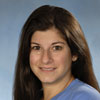 Julie Kaplan, MD, Assistant Professor, Department of Pediatrics, traveled to Tamatave, Madagascar in September as the pediatrician and geneticist for an Operation Smile team that evaluated and operated on children with cleft lip and cleft palates. The team performed surgeries on 119 patients, primarily children.
Julie Kaplan, MD, Assistant Professor, Department of Pediatrics, traveled to Tamatave, Madagascar in September as the pediatrician and geneticist for an Operation Smile team that evaluated and operated on children with cleft lip and cleft palates. The team performed surgeries on 119 patients, primarily children.
New Faculty
 Shabnam Salimi, AS, MD, MSc, joined the Department of Epidemiology & Public Health as a Research Fellow on September 1.”
Shabnam Salimi, AS, MD, MSc, joined the Department of Epidemiology & Public Health as a Research Fellow on September 1.”
 Dennis Sparta, PhD, has been appointed as an Assistant Professor in the Department of Anatomy & Neurobiology. Dr. Sparta received his BA from Rutgers University in 2002. In 2004, he received his MA in Biological Psychology from the University of North Carolina at Chapel Hill and completed a PhD in Behavioral Neuroscience there in 2007. He has held fellowships at the University of California, San Francisco from 2008–2010 and the University of North Carolina at Chapel Hill from 2010–2014.
Dennis Sparta, PhD, has been appointed as an Assistant Professor in the Department of Anatomy & Neurobiology. Dr. Sparta received his BA from Rutgers University in 2002. In 2004, he received his MA in Biological Psychology from the University of North Carolina at Chapel Hill and completed a PhD in Behavioral Neuroscience there in 2007. He has held fellowships at the University of California, San Francisco from 2008–2010 and the University of North Carolina at Chapel Hill from 2010–2014.
Events, Lectures & Workshops
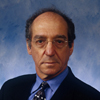 Gad Alon, PT, PhD, Associate Professor Emeritus, Department of Physical Therapy & Rehabilitation Science, presented “Wearable Functional Electrical Stimulation (FES) and Non-Invasive Electrical Brain Stimulation (ESB): On the Road to Personalized Intervention in Physical Rehabilitation” at the 2014 International Functional Electrical Stimulation Society (IFESS) annual meeting in Kuala Lumpur, Malaysia.
Gad Alon, PT, PhD, Associate Professor Emeritus, Department of Physical Therapy & Rehabilitation Science, presented “Wearable Functional Electrical Stimulation (FES) and Non-Invasive Electrical Brain Stimulation (ESB): On the Road to Personalized Intervention in Physical Rehabilitation” at the 2014 International Functional Electrical Stimulation Society (IFESS) annual meeting in Kuala Lumpur, Malaysia.
 Dayanand Bagdure MBBS, MPH, Assistant Professor, Department of Pediatrics, was among the co-authors on “2009 H1N1 Compared to Post-Pandemic H1N1 Influenza Among Pediatric Patients” which was presented at IDWeek, an annual scientific meeting for Infectious Disease professionals, held from October 8-12 in Philadelphia.
Dayanand Bagdure MBBS, MPH, Assistant Professor, Department of Pediatrics, was among the co-authors on “2009 H1N1 Compared to Post-Pandemic H1N1 Influenza Among Pediatric Patients” which was presented at IDWeek, an annual scientific meeting for Infectious Disease professionals, held from October 8-12 in Philadelphia.
 Michael Chuong, MD, Assistant Professor, Department of Radiation Oncology, presented “Proton Therapy and the Future of Cancer” and highlighted the new Maryland Proton Therapy Center as part of the University of Maryland School of Medicine’s Mini-Med School on October 1.
Michael Chuong, MD, Assistant Professor, Department of Radiation Oncology, presented “Proton Therapy and the Future of Cancer” and highlighted the new Maryland Proton Therapy Center as part of the University of Maryland School of Medicine’s Mini-Med School on October 1.
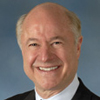 Curt Civin, MD, Associate Dean for Research, Director, Center for Stem Cell Biology & Regenerative Medicine, and Professor, Departments of Pediatrics and Physiology, will present “MicroRNA (MIR) Regulation of Human Hematopoietic Stem-Progenitors (HSPCs)” at the Plenary Session during the 7th Annual Maryland Stem Cell Research Fund Symposium (MSCRF), to be held at the Silver Spring Civic Center on December 2.
Curt Civin, MD, Associate Dean for Research, Director, Center for Stem Cell Biology & Regenerative Medicine, and Professor, Departments of Pediatrics and Physiology, will present “MicroRNA (MIR) Regulation of Human Hematopoietic Stem-Progenitors (HSPCs)” at the Plenary Session during the 7th Annual Maryland Stem Cell Research Fund Symposium (MSCRF), to be held at the Silver Spring Civic Center on December 2.
 Alan Cross, MD, Professor, Department of Medicine presented both “Host-Oriented Therapy for Infectious Diseases” and “Understanding Pathogenicity: A Workshop for the Biologic Weapons Convention Meeting of Experts” at a conference in Geneva, Switzerland on August 3.
Alan Cross, MD, Professor, Department of Medicine presented both “Host-Oriented Therapy for Infectious Diseases” and “Understanding Pathogenicity: A Workshop for the Biologic Weapons Convention Meeting of Experts” at a conference in Geneva, Switzerland on August 3.
 Ann Farese, MS, Assistant Professor, Department of Radiation Oncology, was invited to present “Medical Countermeasure Development Following the FDA Animal Rule: Efficacy of Neupogen and Neulasta in Rhesus Macaques Experiencing the Hematopoietic Syndrome of the Acute Radiation Syndrome” as part of a symposium on “Medical Countermeasures Against the Acute Radiation Syndrome” at the 60th Annual Radiation Research Society Meeting held in Las Vegas, NV, from September 21–24.
Ann Farese, MS, Assistant Professor, Department of Radiation Oncology, was invited to present “Medical Countermeasure Development Following the FDA Animal Rule: Efficacy of Neupogen and Neulasta in Rhesus Macaques Experiencing the Hematopoietic Syndrome of the Acute Radiation Syndrome” as part of a symposium on “Medical Countermeasures Against the Acute Radiation Syndrome” at the 60th Annual Radiation Research Society Meeting held in Las Vegas, NV, from September 21–24.
 Julie Frank, MS, Genetic Counselor, Department of Pediatrics, presented “Assessing the Impact of BRCA Testing Decisions on Breast Cancer Worry and Decision Regret” at the 33rd National Society of Genetic Counselors Annual Education Conference, held in New Orleans, LA, in September. Rachel Palmquist, MS, Genetic Counselor, Department of Pediatrics, presented “Impact of Genetic Counseling in the Cardiac Intensive Care Unit for Infants with Isolated Congenital Heart Defects” at the same meeting.
Julie Frank, MS, Genetic Counselor, Department of Pediatrics, presented “Assessing the Impact of BRCA Testing Decisions on Breast Cancer Worry and Decision Regret” at the 33rd National Society of Genetic Counselors Annual Education Conference, held in New Orleans, LA, in September. Rachel Palmquist, MS, Genetic Counselor, Department of Pediatrics, presented “Impact of Genetic Counseling in the Cardiac Intensive Care Unit for Infants with Isolated Congenital Heart Defects” at the same meeting.
 Feng Jiang, MD, PhD, Associate Professor, and Sanford Stass, MD, Professor and Chair, both from the Department of Pathology, presented “Small ncRNA Biomarkers for Identifying Lung Cancer in Indeterminate Solitary Pulmonary Nodules” at the 9th NIH Early Detection Research Network Scientific Workshop “Biomarkers at a Crossroad in Personalized Cancer Risk Assessment and Detection” in Bethesda, MD, in September.
Feng Jiang, MD, PhD, Associate Professor, and Sanford Stass, MD, Professor and Chair, both from the Department of Pathology, presented “Small ncRNA Biomarkers for Identifying Lung Cancer in Indeterminate Solitary Pulmonary Nodules” at the 9th NIH Early Detection Research Network Scientific Workshop “Biomarkers at a Crossroad in Personalized Cancer Risk Assessment and Detection” in Bethesda, MD, in September.
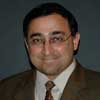 Amal Mattu, MD, Professor, Department of Emergency Medicine, presented a 13-hour advanced electrocardiography workshop in Barcelona, Spain, on September 15 and 16, during the 8th Annual Symposium on Advanced Emergency Electrocardiography.
Amal Mattu, MD, Professor, Department of Emergency Medicine, presented a 13-hour advanced electrocardiography workshop in Barcelona, Spain, on September 15 and 16, during the 8th Annual Symposium on Advanced Emergency Electrocardiography.
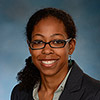 Casey Overby, PhD, Assistant Professor, Department of Medicine, presented “A Template for Authoring and Adapting Genomic Medicine Content in the eMERGE Infobutton Project” at the American Medical Informatics Association (AMIA) 2014 Annual Symposium in Washington, DC in November.
Casey Overby, PhD, Assistant Professor, Department of Medicine, presented “A Template for Authoring and Adapting Genomic Medicine Content in the eMERGE Infobutton Project” at the American Medical Informatics Association (AMIA) 2014 Annual Symposium in Washington, DC in November.
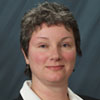 E. Anne Reicherter, PT, DPT, PhD, OCS, CHES, Associate Professor; Leslie Glickman, PT, PhD, Associate Professor; and Laurie Neely, PT, DPT, Assistant Professor, all from the Department of Physical Therapy & Rehabilitation Science, were co-contributors for the program presentation “Developing Sustainable Experiences in Under-Resourced Communities: Achieving Program, Curricular, and Clinical Education Goals in Physical Therapist Education” at the 2014 Educational Leadership Conference of the American Physical Therapy Association, held in Kansas City, MO, October 10-11.
E. Anne Reicherter, PT, DPT, PhD, OCS, CHES, Associate Professor; Leslie Glickman, PT, PhD, Associate Professor; and Laurie Neely, PT, DPT, Assistant Professor, all from the Department of Physical Therapy & Rehabilitation Science, were co-contributors for the program presentation “Developing Sustainable Experiences in Under-Resourced Communities: Achieving Program, Curricular, and Clinical Education Goals in Physical Therapist Education” at the 2014 Educational Leadership Conference of the American Physical Therapy Association, held in Kansas City, MO, October 10-11.
 Pei Zhang, PhD, Postdoctoral Fellow, Department of Radiation Oncology, was invited to present “CTGF Expression is Increased in Irradiated Non-Human Primate Lung Tissue” at the “Mitigation and Treatment of Radiation Injury” workshop organized by the Centers for Medical Countermeasures Against Radiation (CMCR) and held in Baltimore from October 8-10, 2014. Dr. Zhang’s work is supervised by Thomas MacVittie, PhD, Professor, and Wanchang Cui, PhD, Research Associate.
Pei Zhang, PhD, Postdoctoral Fellow, Department of Radiation Oncology, was invited to present “CTGF Expression is Increased in Irradiated Non-Human Primate Lung Tissue” at the “Mitigation and Treatment of Radiation Injury” workshop organized by the Centers for Medical Countermeasures Against Radiation (CMCR) and held in Baltimore from October 8-10, 2014. Dr. Zhang’s work is supervised by Thomas MacVittie, PhD, Professor, and Wanchang Cui, PhD, Research Associate.
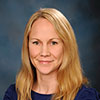 The Department of Orthopaedics was very well represented at the 30th Annual Meeting of Orthopaedic Trauma Association in Tampa, FL. Presenters included Christina Boulton, MD, Assistant Professor; W. Andrew Eglseder, MD, Associate Professor; Carla Hebert, Research Associate; Adam Hsieh, PhD, Assistant Professor; David Jaffe, MD, PGY-4; Ehsan Jazini, MD, PGY-4; Christopher LeBrun, MD, Clinical Assistant Professor; Steven Ludwig, MD, Professor; Theodore Manson, MD, Associate Professor; Paul Matuszewski, MD, Chief Resident; Jason Nascone, MD, Associate Professor; Thao Nguyen, MD, PGY-3; Robert O’Toole, MD, Professor; Raymond Pensy, MD, Assistant Professor; Andrew Pollak, MD, the James Lawrence Kernan Professor and Chair; Marcus Sciadini, MD, Associate Professor; Joseph Stains, PhD, Associate Professor; and Oliver Tannous, MD, Chief Resident.
The Department of Orthopaedics was very well represented at the 30th Annual Meeting of Orthopaedic Trauma Association in Tampa, FL. Presenters included Christina Boulton, MD, Assistant Professor; W. Andrew Eglseder, MD, Associate Professor; Carla Hebert, Research Associate; Adam Hsieh, PhD, Assistant Professor; David Jaffe, MD, PGY-4; Ehsan Jazini, MD, PGY-4; Christopher LeBrun, MD, Clinical Assistant Professor; Steven Ludwig, MD, Professor; Theodore Manson, MD, Associate Professor; Paul Matuszewski, MD, Chief Resident; Jason Nascone, MD, Associate Professor; Thao Nguyen, MD, PGY-3; Robert O’Toole, MD, Professor; Raymond Pensy, MD, Assistant Professor; Andrew Pollak, MD, the James Lawrence Kernan Professor and Chair; Marcus Sciadini, MD, Associate Professor; Joseph Stains, PhD, Associate Professor; and Oliver Tannous, MD, Chief Resident.
 The Institute of Human Virology (IHV) at the University of Maryland School of Medicine welcomed Ambassador Deborah Birx, MD, U.S. Global AIDS Coordinator, as a speaker for the 16th Annual International Meeting hosted by IHV in Baltimore on September 16. Ambassador Birx is a world renowned medical expert and leader in the field of HIV/AIDS whose three decade-long career has focused on HIV/AIDS immunology, vaccine research, and global health. As the U.S. Global AIDS Coordinator, Ambassador Birx oversees the implementation of the U.S. President’s Emergency Plan for AIDS Relief (PEPFAR), the largest commitment by any nation to combat a single disease in history, as well as all U.S. Government engagement with the Global Fund to Fight AIDS, Tuberculosis and Malaria. IHV is a national leader and recipient of PEPFAR funds—implementing the program in 7 African and 2 Caribbean nations.
The Institute of Human Virology (IHV) at the University of Maryland School of Medicine welcomed Ambassador Deborah Birx, MD, U.S. Global AIDS Coordinator, as a speaker for the 16th Annual International Meeting hosted by IHV in Baltimore on September 16. Ambassador Birx is a world renowned medical expert and leader in the field of HIV/AIDS whose three decade-long career has focused on HIV/AIDS immunology, vaccine research, and global health. As the U.S. Global AIDS Coordinator, Ambassador Birx oversees the implementation of the U.S. President’s Emergency Plan for AIDS Relief (PEPFAR), the largest commitment by any nation to combat a single disease in history, as well as all U.S. Government engagement with the Global Fund to Fight AIDS, Tuberculosis and Malaria. IHV is a national leader and recipient of PEPFAR funds—implementing the program in 7 African and 2 Caribbean nations.
 Horea Rus, MD, PhD, Professor, Department of Neurology, presented “RGC-32 Is Essential for TGF-Beta Mediated TH17 CD4 Cells Differentiation” at the XXV International Complement Workshop, held in Rio de Janeiro, Brazil from September 14-18.
Horea Rus, MD, PhD, Professor, Department of Neurology, presented “RGC-32 Is Essential for TGF-Beta Mediated TH17 CD4 Cells Differentiation” at the XXV International Complement Workshop, held in Rio de Janeiro, Brazil from September 14-18.
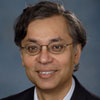 Shiladitya DasSarma, PhD, Professor, Department of Microbiology & Immunology, presented “Combined Bioinformatic and Experimental Approach to Extreme Enzyme Function” at the 248th National Meeting of the American Chemical Society in San Francisco in August.
Shiladitya DasSarma, PhD, Professor, Department of Microbiology & Immunology, presented “Combined Bioinformatic and Experimental Approach to Extreme Enzyme Function” at the 248th National Meeting of the American Chemical Society in San Francisco in August.
Grants & Contracts
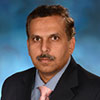 Zubair Ahmed, PhD, Associate Professor, Department of Otorhinolaryngology Head and Neck Surgery, received a two-year, $676,000 grant from the National Institute of Arthritis and Musculoskeletal and Skin Diseases (NIAMS/NIH), for “Molecular Genetics of Nonsyndromic Oculocutaneous Albinism.” The grant applies contemporary sequencing technologies to identify new genes associated with albinism in humans and characterize their roles using a zebrafish model system. Saima Riazuddin, PhD, MPH, MBA, an Associate Professor in the same department, is co-investigator on this project.
Zubair Ahmed, PhD, Associate Professor, Department of Otorhinolaryngology Head and Neck Surgery, received a two-year, $676,000 grant from the National Institute of Arthritis and Musculoskeletal and Skin Diseases (NIAMS/NIH), for “Molecular Genetics of Nonsyndromic Oculocutaneous Albinism.” The grant applies contemporary sequencing technologies to identify new genes associated with albinism in humans and characterize their roles using a zebrafish model system. Saima Riazuddin, PhD, MPH, MBA, an Associate Professor in the same department, is co-investigator on this project.
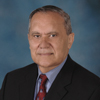 Edson Albuquerque, MD, Professor, Department of Epidemiology and Public Health, received a two-year, $1,551,295, SBIR award from NIH, via the Countervail Corporation, for “Definitive Studies for Use of Galantamine As A Pre-Treatment Countermeasure Against Nerve Gas Poisoning.”
Edson Albuquerque, MD, Professor, Department of Epidemiology and Public Health, received a two-year, $1,551,295, SBIR award from NIH, via the Countervail Corporation, for “Definitive Studies for Use of Galantamine As A Pre-Treatment Countermeasure Against Nerve Gas Poisoning.”
 Wilbur Chen, MD, MS, Associate Professor, Department of Medicine (study PI), and Karen Kotloff, MD, Professor, Department of Pediatrics (contract PI), both also from the Center for Vaccine Development (CVD), have been awarded up to $1,098,151 for a task order to perform “A Phase II Randomized, Partially-Blinded, Controlled Trial in Healthy Adults Aged 65 Years and Older to Assess the Safety, Reactogenicity, and Immunogenicity of an MF59-Adjuvanted, Monovalent Inactivated Influenza A/H7N9 Virus Vaccine Administered Intramuscularly at Different Intervals and Dosages” as part of the NIAID’s Vaccine and Treatment Evaluation Unit contract.
Wilbur Chen, MD, MS, Associate Professor, Department of Medicine (study PI), and Karen Kotloff, MD, Professor, Department of Pediatrics (contract PI), both also from the Center for Vaccine Development (CVD), have been awarded up to $1,098,151 for a task order to perform “A Phase II Randomized, Partially-Blinded, Controlled Trial in Healthy Adults Aged 65 Years and Older to Assess the Safety, Reactogenicity, and Immunogenicity of an MF59-Adjuvanted, Monovalent Inactivated Influenza A/H7N9 Virus Vaccine Administered Intramuscularly at Different Intervals and Dosages” as part of the NIAID’s Vaccine and Treatment Evaluation Unit contract.
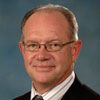 Gary Fiskum, PhD, the M. Jane Matjasko Professor for Research and Vice-Chair for Research in the Department of Anesthesiology, was awarded a one year $250,000 grant from the US Air Force to explore “Changes in Gene Expression Following Exposure to Different Durations and Levels of Hypobaria.” Co-investigators include Raymond Fang, MD, Clinical Associate Professor, and Stacey Shackelford, MD, Clinical Assistant Professor, both from the Department of Surgery and the Program in Trauma.
Gary Fiskum, PhD, the M. Jane Matjasko Professor for Research and Vice-Chair for Research in the Department of Anesthesiology, was awarded a one year $250,000 grant from the US Air Force to explore “Changes in Gene Expression Following Exposure to Different Durations and Levels of Hypobaria.” Co-investigators include Raymond Fang, MD, Clinical Associate Professor, and Stacey Shackelford, MD, Clinical Assistant Professor, both from the Department of Surgery and the Program in Trauma.
 Larry Forrester, PhD, Associate Professor, Department of Physical Therapy & Rehabilitation Science, received a VA Merit grant for $1.1 million over four years for “Adaptive Ankle Robot Control System to Reduce Foot-Drop in Chronic Stroke.” Richard Macko, MD, Professor, Department of Neurology, is co-PI on the project.
Larry Forrester, PhD, Associate Professor, Department of Physical Therapy & Rehabilitation Science, received a VA Merit grant for $1.1 million over four years for “Adaptive Ankle Robot Control System to Reduce Foot-Drop in Chronic Stroke.” Richard Macko, MD, Professor, Department of Neurology, is co-PI on the project.
 Anthony Kim, PhD, Assistant Professor, Department of Neurosurgery, received a three-year, $390,393, NIH K25 Career Development Award from the National Institute of Biomedical Imaging and Bioengineering for “Fn14-targeted Therapeutics for Invasive Brain Cancer.” The primary mentor for this Award is Jeffrey Winkles, PhD, Professor, Departments of Surgery and Physiology.
Anthony Kim, PhD, Assistant Professor, Department of Neurosurgery, received a three-year, $390,393, NIH K25 Career Development Award from the National Institute of Biomedical Imaging and Bioengineering for “Fn14-targeted Therapeutics for Invasive Brain Cancer.” The primary mentor for this Award is Jeffrey Winkles, PhD, Professor, Departments of Surgery and Physiology.
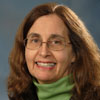 Iris Lindberg, PhD, Professor, Department of Anatomy & Neurobiology, received a two-year, $456,663 grant from NIH and the National Institute on Aging for “The Secretory Chaperone 7B2 as an Endogenous Regulator of Amyloid Pathology.”
Iris Lindberg, PhD, Professor, Department of Anatomy & Neurobiology, received a two-year, $456,663 grant from NIH and the National Institute on Aging for “The Secretory Chaperone 7B2 as an Endogenous Regulator of Amyloid Pathology.”
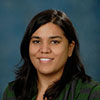 Mary Kay Lobo, PhD, Assistant Professor, Department of Anatomy & Neurobiology, received a five-year, $1,918,750 grant from the National Institute on Drug Abuse (NIDA) for “Cell Subtype Transcriptional Mechanisms in Cocaine Addition.”
Mary Kay Lobo, PhD, Assistant Professor, Department of Anatomy & Neurobiology, received a five-year, $1,918,750 grant from the National Institute on Drug Abuse (NIDA) for “Cell Subtype Transcriptional Mechanisms in Cocaine Addition.”
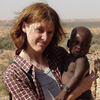 Kirsten Lyke, MD, Associate Professor, Department of Geographic Medicine, received a one-year $378,057 grant from the EMMES Corporation for rapid implementation of an Ebola vaccine sponsored by the Vaccine Research Center of the National Institute of Allergy & Infectious Diseases (NIAID) at the NIH and in collaboration with Emory University in Atlanta, GA. Entitled, “A Phase I/1b, Open-Label, Dose-Escalation Clinical Trial to Evaluate the Safety, Tolerability and Immunogenicity of the Ebola Chimpanzee Adenovirus Vector Vaccines, VRC-EBOADC069-00-VP (cAd3-EBO) and VRC-EBOADC076-00-VP (cAd3-EBOZ), in Healthy Adults,” the Center for Vaccine Development will be performing Phase I testing on a monovalent Ebola vaccine (cAd3-EBOZ) concomitant with field testing in Africa. James Campbell, MD, MS, Associate Professor, Department of Pediatrics; Wilbur Chen, MD, MS, Associate Professor, Department of Medicine; and Karen Kotloff, MD, Professor, Department of Pediatrics, all also with the CVD, will also be investigators for the study, which will be recruiting imminently. Dr. Lyke also received a two-year $2,081,000 grant from the Joint Warfighter Medical Research Program/Department of the Army- USAMRAA, in collaboration with Sanaria Inc. and the Naval Medical Research Center, for “Phase 2 Development of the PfSPZ Vaccine to Protect the Warfighter from Malaria.” This study will evaluate the irradiated P. falciparum (Pf), metabolically active whole sporozoite (SPZ) malaria vaccine in healthy, malaria-naive volunteers and assess protective efficacy against heterologous strains of malaria. Andrea Berry, MD, Assistant Professor, and Matthew Laurens, MD, MPH, Associate Professor, both with the Department of Pediatrics and the CVD will also be investigators on the study, estimated to begin in early 2015.
Kirsten Lyke, MD, Associate Professor, Department of Geographic Medicine, received a one-year $378,057 grant from the EMMES Corporation for rapid implementation of an Ebola vaccine sponsored by the Vaccine Research Center of the National Institute of Allergy & Infectious Diseases (NIAID) at the NIH and in collaboration with Emory University in Atlanta, GA. Entitled, “A Phase I/1b, Open-Label, Dose-Escalation Clinical Trial to Evaluate the Safety, Tolerability and Immunogenicity of the Ebola Chimpanzee Adenovirus Vector Vaccines, VRC-EBOADC069-00-VP (cAd3-EBO) and VRC-EBOADC076-00-VP (cAd3-EBOZ), in Healthy Adults,” the Center for Vaccine Development will be performing Phase I testing on a monovalent Ebola vaccine (cAd3-EBOZ) concomitant with field testing in Africa. James Campbell, MD, MS, Associate Professor, Department of Pediatrics; Wilbur Chen, MD, MS, Associate Professor, Department of Medicine; and Karen Kotloff, MD, Professor, Department of Pediatrics, all also with the CVD, will also be investigators for the study, which will be recruiting imminently. Dr. Lyke also received a two-year $2,081,000 grant from the Joint Warfighter Medical Research Program/Department of the Army- USAMRAA, in collaboration with Sanaria Inc. and the Naval Medical Research Center, for “Phase 2 Development of the PfSPZ Vaccine to Protect the Warfighter from Malaria.” This study will evaluate the irradiated P. falciparum (Pf), metabolically active whole sporozoite (SPZ) malaria vaccine in healthy, malaria-naive volunteers and assess protective efficacy against heterologous strains of malaria. Andrea Berry, MD, Assistant Professor, and Matthew Laurens, MD, MPH, Associate Professor, both with the Department of Pediatrics and the CVD will also be investigators on the study, estimated to begin in early 2015.
 Dennis Sparta, PhD, Assistant Professor, Department of Anatomy & Neurobiology, received a three-year, $736,215 continuation award for a K99 grant from the NIH and the National Institute on Alcohol Abuse and Alcoholism for “The Role of the BNST to VTA Neural Circuit in Binge Alcohol Consumption.”
Dennis Sparta, PhD, Assistant Professor, Department of Anatomy & Neurobiology, received a three-year, $736,215 continuation award for a K99 grant from the NIH and the National Institute on Alcohol Abuse and Alcoholism for “The Role of the BNST to VTA Neural Circuit in Binge Alcohol Consumption.”
Congratulations to the following Maryland Stem Cell Research Grant Fund Awardees affiliated with the School of Medicine:
Investigator-Initiated Grant Awardees:
 Curt Civin, MD, Professor, Department of Pediatrics, Director of the Center for Stem Cell Biology & Regenerative Medicine, and Associate Dean for Research—“Genetic Modification of Sickle Cell Disease in Hematopoietic Stem Cells” J Ke Ren, MD, PhD, Associate Professor, Department of Anatomy & Neurobiology (secondary appointment) and University of Maryland School of Dentistry—“Mesenchymal Stem Cells for Chronic Pain Therapy”
Curt Civin, MD, Professor, Department of Pediatrics, Director of the Center for Stem Cell Biology & Regenerative Medicine, and Associate Dean for Research—“Genetic Modification of Sickle Cell Disease in Hematopoietic Stem Cells” J Ke Ren, MD, PhD, Associate Professor, Department of Anatomy & Neurobiology (secondary appointment) and University of Maryland School of Dentistry—“Mesenchymal Stem Cells for Chronic Pain Therapy”
Exploratory Grant Awardees:
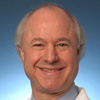 Curt Civin, MD, Professor, Department of Pediatrics, Director of the Center for Stem Cell Biology & Regenerative Medicine, and Associate Dean for Research, and Jonathan Dinman, University of Maryland, College Park—“Directed Delivery of Therapeutic RNAs into Hematopoietic Stem-Progenitor Cells” J Marta Lipinski, PhD, Assistant Professor, Department of Anesthesiology—“Modeling Parkinson’s Disease Function of the PARK10 Gene USP24 in Human iPS Cells” J A-Lien Lu-Chang, PhD, Professor, Department of Biochemistry & Molecular Biology—“The Effects of Histone Deacetylation and DNA Demethylation on Somatic Cell Reprogramming” J Feyruz Rassool, PhD, Associate Professor, Department of Radiation Oncology—“Efficiently Reprogramed Cells with a MYC Signature Display High Fidelity Repair of DNA Damage.” J Joseph Stains, PhD, Associate Professor, Department of Orthopaedics—“The Role of the Beta-Catenin Signaling Cascade in the Skeletal Phenotype of Hutchinson-Gilford Progeria Syndrome”
Curt Civin, MD, Professor, Department of Pediatrics, Director of the Center for Stem Cell Biology & Regenerative Medicine, and Associate Dean for Research, and Jonathan Dinman, University of Maryland, College Park—“Directed Delivery of Therapeutic RNAs into Hematopoietic Stem-Progenitor Cells” J Marta Lipinski, PhD, Assistant Professor, Department of Anesthesiology—“Modeling Parkinson’s Disease Function of the PARK10 Gene USP24 in Human iPS Cells” J A-Lien Lu-Chang, PhD, Professor, Department of Biochemistry & Molecular Biology—“The Effects of Histone Deacetylation and DNA Demethylation on Somatic Cell Reprogramming” J Feyruz Rassool, PhD, Associate Professor, Department of Radiation Oncology—“Efficiently Reprogramed Cells with a MYC Signature Display High Fidelity Repair of DNA Damage.” J Joseph Stains, PhD, Associate Professor, Department of Orthopaedics—“The Role of the Beta-Catenin Signaling Cascade in the Skeletal Phenotype of Hutchinson-Gilford Progeria Syndrome”
Post-Doctoral Fellowship Grant Awardees:
 Raju Khatri, PhD, Postdoctoral Fellow, Department of Biochemistry & Molecular Biology (Mentor: Michal Zalzman, PhD, Assistant Professor, Departments of Biochemistry & Molecular Biology and Otorhinolaryngology-Head & Neck Surgery)—“Increasing the Replicative Lifespan and Quality of Adult Mesenchymal Stem Cells”
Raju Khatri, PhD, Postdoctoral Fellow, Department of Biochemistry & Molecular Biology (Mentor: Michal Zalzman, PhD, Assistant Professor, Departments of Biochemistry & Molecular Biology and Otorhinolaryngology-Head & Neck Surgery)—“Increasing the Replicative Lifespan and Quality of Adult Mesenchymal Stem Cells”
Honors & Awards
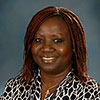 Alash’le Abimiku, PhD, Associate Professor, Institute of Human Virology (IHV) was made a Member of the Order of the Niger of the Federal Republic of Nigeria by President Goodluck Ebele Jonathan. The Award honors Nigerians “from all walks of life, those who have rendered special and outstanding services in their various callings, to the benefit and progress of the nation.” The President of the Federal Republic of Nigeria, His Excellency Goodluck Ebele Jonathan, presented Dr. Abimiku the Award during a ceremony in Abuja, Nigeria on September 29, 2014. The award was bestowed upon Dr. Abimiku in recognition of her 30 years of service to developing research infrastructure through the establishment of PLASVIREC in Jos, Nigeria and the Institute of Human Virology Nigeria in Abuja, with the goal of empowering Nigeria’s response to its myriad health challenges, particularly HIV. Dr. Abimiku was a postdoctoral fellow in 1991 at the National Institutes of Health, working with IHV Director Dr. Robert Gallo, where she pioneered the characterization of Nigeria’s HIV epidemic, showing the isolates to be non B, subtype G and A/G recombinant. These subtypes—G and recombinant form (CRF02) are second in the world behind subtype C prominent in Southern Africa as the cause of the HIV pandemic. These data have significance to HIV vaccine development. Dr. Abimiku, in collaboration with Drs. Gallo and Blattner, have channeled more than $300 million in research and health care implementation and training funds to Nigeria and have impacted several million. As “LYNCH PIN FOR NIGERIA,” she has channeled grant funding from The Bill and Melinda Gates Foundation, the World AIDS Foundation, the U.S. Department of Defense, U.S. Centers for Disease Control, U.S. President’s Emergency Plan for AIDS Relief (PEPFAR)), U.S. National Institutes of Health, and Canadian Global Health Research Initiative to impact the health of the people of Nigeria and achieve research with broad scientific and public health impact.
Alash’le Abimiku, PhD, Associate Professor, Institute of Human Virology (IHV) was made a Member of the Order of the Niger of the Federal Republic of Nigeria by President Goodluck Ebele Jonathan. The Award honors Nigerians “from all walks of life, those who have rendered special and outstanding services in their various callings, to the benefit and progress of the nation.” The President of the Federal Republic of Nigeria, His Excellency Goodluck Ebele Jonathan, presented Dr. Abimiku the Award during a ceremony in Abuja, Nigeria on September 29, 2014. The award was bestowed upon Dr. Abimiku in recognition of her 30 years of service to developing research infrastructure through the establishment of PLASVIREC in Jos, Nigeria and the Institute of Human Virology Nigeria in Abuja, with the goal of empowering Nigeria’s response to its myriad health challenges, particularly HIV. Dr. Abimiku was a postdoctoral fellow in 1991 at the National Institutes of Health, working with IHV Director Dr. Robert Gallo, where she pioneered the characterization of Nigeria’s HIV epidemic, showing the isolates to be non B, subtype G and A/G recombinant. These subtypes—G and recombinant form (CRF02) are second in the world behind subtype C prominent in Southern Africa as the cause of the HIV pandemic. These data have significance to HIV vaccine development. Dr. Abimiku, in collaboration with Drs. Gallo and Blattner, have channeled more than $300 million in research and health care implementation and training funds to Nigeria and have impacted several million. As “LYNCH PIN FOR NIGERIA,” she has channeled grant funding from The Bill and Melinda Gates Foundation, the World AIDS Foundation, the U.S. Department of Defense, U.S. Centers for Disease Control, U.S. President’s Emergency Plan for AIDS Relief (PEPFAR)), U.S. National Institutes of Health, and Canadian Global Health Research Initiative to impact the health of the people of Nigeria and achieve research with broad scientific and public health impact.
 Kevin Brown, MS, executive director for the Offices of Student Affairs and Medical Education, Priyanka Koneru, MS, web developer for the Office of Medical Education, and Sara Menso, MBA, business analyst for the Office of Student Affairs, have received a copyright for Automated Student Affairs Processes. Automated Student Affairs Processes is a Windows foundation software application for automatic compiling, ease of editing, and tracking of Medical Student Performance Evaluations (MSPE) prepared by medical school student affairs offices. The software has already been licensed to one other medical school.
Kevin Brown, MS, executive director for the Offices of Student Affairs and Medical Education, Priyanka Koneru, MS, web developer for the Office of Medical Education, and Sara Menso, MBA, business analyst for the Office of Student Affairs, have received a copyright for Automated Student Affairs Processes. Automated Student Affairs Processes is a Windows foundation software application for automatic compiling, ease of editing, and tracking of Medical Student Performance Evaluations (MSPE) prepared by medical school student affairs offices. The software has already been licensed to one other medical school.
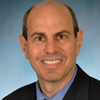 Anthony Harris MD, MPH, Professor, Department of Epidemiology & Public Health, was presented the 2014 Society for Health Epidemiology of America (SHEA) Investigator Award at the Infectious Disease Week 2014 Meeting in Philadelphia, PA on Oct 8–12.
Anthony Harris MD, MPH, Professor, Department of Epidemiology & Public Health, was presented the 2014 Society for Health Epidemiology of America (SHEA) Investigator Award at the Infectious Disease Week 2014 Meeting in Philadelphia, PA on Oct 8–12.
 Mary Kay Lobo, PhD, Assistant Professor, Department of Anatomy & Neurobiology, was selected as one of ten early career investigators from across the world to participate in a Future Leaders group at the 11th Annual Science and Technology in Society forum, held in Kyoto, Japan in October, where she represented the U.S.
Mary Kay Lobo, PhD, Assistant Professor, Department of Anatomy & Neurobiology, was selected as one of ten early career investigators from across the world to participate in a Future Leaders group at the 11th Annual Science and Technology in Society forum, held in Kyoto, Japan in October, where she represented the U.S.
 Kathirkama Shanmuganathan, MBBS, Professor, Department of Diagnostic Radiology & Nuclear Medicine, was awarded the American Society of Emergency Radiology’s (ASER) Gold Medal at ASER’s Annual Scientific Meeting in Portland, OR, in September. The ASER Gold Medal recognizes outstanding service to the Society or the radiologic specialty the Society represents. Since joining ASER in 1991, Dr. Shanmuganathan has been an active member, serving on many committees and presenting and lecturing at annual meetings. He is a Fellow of the Society, and he delivered the Founder’s Lecture at the annual meeting in 2006.
Kathirkama Shanmuganathan, MBBS, Professor, Department of Diagnostic Radiology & Nuclear Medicine, was awarded the American Society of Emergency Radiology’s (ASER) Gold Medal at ASER’s Annual Scientific Meeting in Portland, OR, in September. The ASER Gold Medal recognizes outstanding service to the Society or the radiologic specialty the Society represents. Since joining ASER in 1991, Dr. Shanmuganathan has been an active member, serving on many committees and presenting and lecturing at annual meetings. He is a Fellow of the Society, and he delivered the Founder’s Lecture at the annual meeting in 2006.
In the News
 Curt Civin, MD, Associate Dean for Research, Director, Center for Stem Cell Biology & Regenerative Medicine, and Professor, Departments of Pediatrics and Physiology, was featured on the cover and in a feature story for the National Foundation for Cancer Research Progress Report. The interview was titled “Molecular Sawdust Holds The Key—The Power of microRNA.”
Curt Civin, MD, Associate Dean for Research, Director, Center for Stem Cell Biology & Regenerative Medicine, and Professor, Departments of Pediatrics and Physiology, was featured on the cover and in a feature story for the National Foundation for Cancer Research Progress Report. The interview was titled “Molecular Sawdust Holds The Key—The Power of microRNA.”
 Anthony Harris, MD, MPH, was featured in numerous news outlets after speaking about Ebola efforts at the University of Maryland Medical Center on October 2, as part of a joint press conference with Dr. Joshua Sharfstein, MD, head of the Maryland Department of Health & Mental Hygiene. Others in the department involved with Ebola preparedness in Baltimore area hospitals include Surbhi Leekha, MBBS, MPH, Assistant Professor; Daniel Morgan, MD, MS, Associate Professor; and Kerri Thom, MD, MS, Associate Professor.
Anthony Harris, MD, MPH, was featured in numerous news outlets after speaking about Ebola efforts at the University of Maryland Medical Center on October 2, as part of a joint press conference with Dr. Joshua Sharfstein, MD, head of the Maryland Department of Health & Mental Hygiene. Others in the department involved with Ebola preparedness in Baltimore area hospitals include Surbhi Leekha, MBBS, MPH, Assistant Professor; Daniel Morgan, MD, MS, Associate Professor; and Kerri Thom, MD, MS, Associate Professor.
Publications
Shiladitya DasSarma  , PhD, Professor, Department of Microbiology & Immunology, was among the co-authors on “Haloarchaeal Gas Vesicle Nanoparticles Displaying Salmonella SopB Antigen Reduce Bacterial Burden When Administered with Live Attenuated Bacteria” in Vaccine, 2014 Jul 31;32(35):4543-9.
, PhD, Professor, Department of Microbiology & Immunology, was among the co-authors on “Haloarchaeal Gas Vesicle Nanoparticles Displaying Salmonella SopB Antigen Reduce Bacterial Burden When Administered with Live Attenuated Bacteria” in Vaccine, 2014 Jul 31;32(35):4543-9.
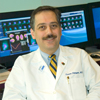 Vasken Dilsizian, MD, Professor, Department of Diagnostic Radiology & Nuclear Medicine, was a co-author on an Editorial Comment entitled “PET-Determined Hyperemic Myocardial Blood Flow: Further Progress to Clinical Application” in the Journal of the American College of Cardiology, 2014 Oct; 64(14):1476-8.
Vasken Dilsizian, MD, Professor, Department of Diagnostic Radiology & Nuclear Medicine, was a co-author on an Editorial Comment entitled “PET-Determined Hyperemic Myocardial Blood Flow: Further Progress to Clinical Application” in the Journal of the American College of Cardiology, 2014 Oct; 64(14):1476-8.
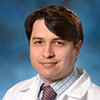 David Dreizin, MD, Assistant Professor, and Uttam Bodanapally, MBBS, Assistant Professor, both from the Department of Diagnostic Radiology & Nuclear Medicine, were among the co-authors on “Evolving Concepts in MDCT Diagnosis of Penetrating Diaphragmatic Injury” in Emergency Radiology, 2014 Jul 22 [Epub ahead of print].
David Dreizin, MD, Assistant Professor, and Uttam Bodanapally, MBBS, Assistant Professor, both from the Department of Diagnostic Radiology & Nuclear Medicine, were among the co-authors on “Evolving Concepts in MDCT Diagnosis of Penetrating Diaphragmatic Injury” in Emergency Radiology, 2014 Jul 22 [Epub ahead of print].
G ary Fiskum, PhD, the M. Jane Matjasko Professor for Research and Vice-Chair for Research in the Department of Anesthesiology, was among the co-authors on “Rat Model of Brain Injury Caused by Under-Vehicle Blast-Induced Hyperacceleration” in the Journal of Trauma Acute Care Surgery, 2014 Sep;77(3 Suppl 2):S83-7. Dr. Fiskum and Brian Polster, MD, Assistant Professor, Department of Anesthesiology, were among the co-authors on “Drp1 is Dispensable for Apoptotic Cytochrome C Release in Primed MCF10A and Fibroblast Cells But Affects Bcl-2 Antagonist-Induced Respiratory Changes” in the British Journal of Pharmacology, 2014 Apr;171(8):1988-99, and on “NADPH Oxidase- and Mitochondria-Derived Reactive Oxygen Species in Proinflammatory Microglial Activation: A Bipartisan Affair?” in Free Radical Biology and Medicine, 2014 Aug 1;76C:34-46.
ary Fiskum, PhD, the M. Jane Matjasko Professor for Research and Vice-Chair for Research in the Department of Anesthesiology, was among the co-authors on “Rat Model of Brain Injury Caused by Under-Vehicle Blast-Induced Hyperacceleration” in the Journal of Trauma Acute Care Surgery, 2014 Sep;77(3 Suppl 2):S83-7. Dr. Fiskum and Brian Polster, MD, Assistant Professor, Department of Anesthesiology, were among the co-authors on “Drp1 is Dispensable for Apoptotic Cytochrome C Release in Primed MCF10A and Fibroblast Cells But Affects Bcl-2 Antagonist-Induced Respiratory Changes” in the British Journal of Pharmacology, 2014 Apr;171(8):1988-99, and on “NADPH Oxidase- and Mitochondria-Derived Reactive Oxygen Species in Proinflammatory Microglial Activation: A Bipartisan Affair?” in Free Radical Biology and Medicine, 2014 Aug 1;76C:34-46.
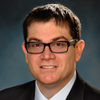 Seth Kligerman, MD, Assistant Professor, Department of Diagnostic Radiology & Nuclear Medicine, was among the co-authors on “Calcified Granulomatous Disease: Occupational Associations and Lack of Familial Aggregation” in Lung, 2014 20 Jul [Epub ahead of print].
Seth Kligerman, MD, Assistant Professor, Department of Diagnostic Radiology & Nuclear Medicine, was among the co-authors on “Calcified Granulomatous Disease: Occupational Associations and Lack of Familial Aggregation” in Lung, 2014 20 Jul [Epub ahead of print].
 Wendy Lane, MD, MPH, Clinical Assistant Professor, Department of Epidemiology & Public Health, was the author of “Prevention of Child Maltreatment” in Pediatric Clinics of North America, 2014 Oct;61(5):873-888. Dr. Lane, and Howard Dubowitz, MB, ChB, FAAP, and Susan Feigelman, MD, both Professors in the Department of Pediatrics, were among the co-authors on “The Effectiveness of Food Insecurity Screening in Pediatric Primary Care” in the International Journal of Child Health and Nutrition, 2014 Sep;3:130-138.
Wendy Lane, MD, MPH, Clinical Assistant Professor, Department of Epidemiology & Public Health, was the author of “Prevention of Child Maltreatment” in Pediatric Clinics of North America, 2014 Oct;61(5):873-888. Dr. Lane, and Howard Dubowitz, MB, ChB, FAAP, and Susan Feigelman, MD, both Professors in the Department of Pediatrics, were among the co-authors on “The Effectiveness of Food Insecurity Screening in Pediatric Primary Care” in the International Journal of Child Health and Nutrition, 2014 Sep;3:130-138.
 Dan Lemkin, MD, MS, Assistant Professor; Michael Witting, MD, MS, Associate Professor; Michael Allison, MD, MS, Clinical Assistant Professor; Ali Farzad, MD, Cardiovascular Fellow; and Michael Bond, MD, Associate Professor, all from the Department of Emergency Medicine, along with Dr. Lemkin’s brother Mark Lemkin, PhD, an engineer with Linear Technology in Haywood, CA, were the authors on “Electrical Exposure Risk Associated with Hands-on Defibrillation,” which was named the October Article of the Month in the journal Resuscitation (2014 Oct;85(10):1330-6.). Based on their measurements of voltages received during CPR techniques applied to cadavers, the authors concluded that rescuers are at risk of exposure to energy levels higher than accepted standards when a defibrillator is used. They recommend that rescuers “disconnect” from a patient before a shock is delivered.
Dan Lemkin, MD, MS, Assistant Professor; Michael Witting, MD, MS, Associate Professor; Michael Allison, MD, MS, Clinical Assistant Professor; Ali Farzad, MD, Cardiovascular Fellow; and Michael Bond, MD, Associate Professor, all from the Department of Emergency Medicine, along with Dr. Lemkin’s brother Mark Lemkin, PhD, an engineer with Linear Technology in Haywood, CA, were the authors on “Electrical Exposure Risk Associated with Hands-on Defibrillation,” which was named the October Article of the Month in the journal Resuscitation (2014 Oct;85(10):1330-6.). Based on their measurements of voltages received during CPR techniques applied to cadavers, the authors concluded that rescuers are at risk of exposure to energy levels higher than accepted standards when a defibrillator is used. They recommend that rescuers “disconnect” from a patient before a shock is delivered.
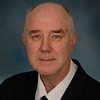 Erik Lillehoj, PhD, Associate Professor, Department of Pediatrics, was among the co-authors on “MUC1 Regulates Epithelial Inflammation and Apoptosis By PolyI:C Through Inhibition of Toll/IL-1 Receptor-Domain-Containing Adapter-Inducing IFN-b (TRIF) Recruitment to Toll-like Receptor 3” in the American Journal of Respiratory Cell and Molecular Biology, 2014 Sep;51(3):446-454.
Erik Lillehoj, PhD, Associate Professor, Department of Pediatrics, was among the co-authors on “MUC1 Regulates Epithelial Inflammation and Apoptosis By PolyI:C Through Inhibition of Toll/IL-1 Receptor-Domain-Containing Adapter-Inducing IFN-b (TRIF) Recruitment to Toll-like Receptor 3” in the American Journal of Respiratory Cell and Molecular Biology, 2014 Sep;51(3):446-454.
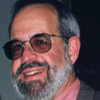 Frank Margolis, PhD, Professor, Department of Anatomy & Neurobiology, was among the co-authors on “The Spatio-Temporal Segregation of GAD Forms Defines Distinct GABA Signaling Functions in the Developing Mouse” in Developmental Neurobiology, 2014 Aug 14 [Epub ahead of print].
Frank Margolis, PhD, Professor, Department of Anatomy & Neurobiology, was among the co-authors on “The Spatio-Temporal Segregation of GAD Forms Defines Distinct GABA Signaling Functions in the Developing Mouse” in Developmental Neurobiology, 2014 Aug 14 [Epub ahead of print].
 Amal Mattu, MD, Professor, Department of Emergency Medicine, served as editor-in-chief of the 21-chapter book Cardiovascular Emergencies, published by the American College of Emergency Physicians in October. This textbook discusses common cardiovascular conditions (chest pain, acute coronary syndromes, coronary artery disease), “hot topics” such as bedside echocardiography and post-arrest care, special populations (patients with cancer, HIV, pulmonary hypertension, and implanted devices; pregnant women; and transplant recipients), as well as risk management in clinical practice. Chapters were contributed by the following Department of Emergency Medicine faculty: John Greenwood, MD, Clinical Instructor; Siamak Moayedi, MD, Assistant Professor; Semhar Tewelde, MD, Instructor; Mercedes Torres, MD, Clinical Assistant Professor; and Michael E. Winters, MD, Associate Professor. The manuscripts were copy-edited by Linda J. Kesselring, MS, ELS, technical editor/writer, Department of Emergency Medicine.
Amal Mattu, MD, Professor, Department of Emergency Medicine, served as editor-in-chief of the 21-chapter book Cardiovascular Emergencies, published by the American College of Emergency Physicians in October. This textbook discusses common cardiovascular conditions (chest pain, acute coronary syndromes, coronary artery disease), “hot topics” such as bedside echocardiography and post-arrest care, special populations (patients with cancer, HIV, pulmonary hypertension, and implanted devices; pregnant women; and transplant recipients), as well as risk management in clinical practice. Chapters were contributed by the following Department of Emergency Medicine faculty: John Greenwood, MD, Clinical Instructor; Siamak Moayedi, MD, Assistant Professor; Semhar Tewelde, MD, Instructor; Mercedes Torres, MD, Clinical Assistant Professor; and Michael E. Winters, MD, Associate Professor. The manuscripts were copy-edited by Linda J. Kesselring, MS, ELS, technical editor/writer, Department of Emergency Medicine.
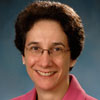 Susan Mendley, MD, Associate Professor, Department of Pediatrics, was among the co-authors on “Use of Opportunistic Clinical Data and a Population Pharmacokinetic Model to Support Dosing of Clindamycin for Premature Infants to Adolescents” in Clinical Pharmacology & Therapeutics, 2014 Jun; 96(4):429-437.
Susan Mendley, MD, Associate Professor, Department of Pediatrics, was among the co-authors on “Use of Opportunistic Clinical Data and a Population Pharmacokinetic Model to Support Dosing of Clindamycin for Premature Infants to Adolescents” in Clinical Pharmacology & Therapeutics, 2014 Jun; 96(4):429-437.
 Mark Mishra, MD, Assistant Professor, Department of Radiation Oncology, was among the co-authors on “Genomic Prostate Cancer Classifier Predicts Biochemical Failure and Metastases in Patients After Postoperative Radiation Therapy” in the International Journal of Radiation Oncology, Biology, Physics, 2014 Aug 1;89:1038–1046.
Mark Mishra, MD, Assistant Professor, Department of Radiation Oncology, was among the co-authors on “Genomic Prostate Cancer Classifier Predicts Biochemical Failure and Metastases in Patients After Postoperative Radiation Therapy” in the International Journal of Radiation Oncology, Biology, Physics, 2014 Aug 1;89:1038–1046.
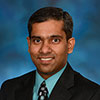 Pranshu Mohindra, MD, Assistant Professor, Department of Radiation Oncology, was among the authors of “Choroid Plexus Tumor Epidemiology and Outcomes: Implications for Surgical and Radiotherapeutic Management” in the Journal of Neuro-Oncology, 2014 Oct 1 [Epub ahead of print].
Pranshu Mohindra, MD, Assistant Professor, Department of Radiation Oncology, was among the authors of “Choroid Plexus Tumor Epidemiology and Outcomes: Implications for Surgical and Radiotherapeutic Management” in the Journal of Neuro-Oncology, 2014 Oct 1 [Epub ahead of print].
 Aruna Panda, BVSc, MS, PhD, MPH, Assistant Professor, and Ivan Tatarov, DVM, Research Associate, both from the Department of Pathology and the Program of Comparative Medicine, and Louis DeTolla, VMD, MS, PhD, DACLAM, Professor, Departments of Pathology, Medicine and Epidemiology & Public Health, and Director of the Program of Comparative Medicine, were among the co-authors on “Enhanced Virulence of the Escherichia coli O157:H7 Spinach-Associated Outbreak Strain in Two Animal Models Is Associated With Higher Levels of Stx2 Production After Induction with Ciprofloxacin” in Infection and Immunity, 2014 Dec;82(12):4968-77.
Aruna Panda, BVSc, MS, PhD, MPH, Assistant Professor, and Ivan Tatarov, DVM, Research Associate, both from the Department of Pathology and the Program of Comparative Medicine, and Louis DeTolla, VMD, MS, PhD, DACLAM, Professor, Departments of Pathology, Medicine and Epidemiology & Public Health, and Director of the Program of Comparative Medicine, were among the co-authors on “Enhanced Virulence of the Escherichia coli O157:H7 Spinach-Associated Outbreak Strain in Two Animal Models Is Associated With Higher Levels of Stx2 Production After Induction with Ciprofloxacin” in Infection and Immunity, 2014 Dec;82(12):4968-77.
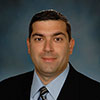 Nicholas Pietris, MD, Assistant Professor, Department of Pediatrics, was among the co-authors on “Imaging in Congenital Pulmonary Vein Anomalies: The Role of Computed Tomography” in Pediatric Radiology, 2014;44:1158-1168.
Nicholas Pietris, MD, Assistant Professor, Department of Pediatrics, was among the co-authors on “Imaging in Congenital Pulmonary Vein Anomalies: The Role of Computed Tomography” in Pediatric Radiology, 2014;44:1158-1168.
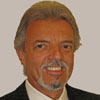 Karl Prado, PhD, Professor, Department of Radiation Oncology, was among the co-authors on “A Six-Year Review of More Than 13,0000 Patient-Specific IMRT QA Results From 13 Different Treatment Sites” in the Journal of Applied Clinical Medical Physics, 2014 Sep 8;15(5):4935.
Karl Prado, PhD, Professor, Department of Radiation Oncology, was among the co-authors on “A Six-Year Review of More Than 13,0000 Patient-Specific IMRT QA Results From 13 Different Treatment Sites” in the Journal of Applied Clinical Medical Physics, 2014 Sep 8;15(5):4935.
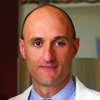 William Regine, MD, Professor and the Isadore & Fannie Schneider Foxman Chair, and Navesh Sharma, DO, PhD, Assistant Professor, both from the Department of Radiation Oncology, were among the co-authors on “Multi-Institutional Pooled Analysis on Adjuvant Chemoradiation in Pancreatic Cancer” in the International Journal of Radiation Oncology, Biology, Physics, 2014 Nov 14;90(4):911-917.
William Regine, MD, Professor and the Isadore & Fannie Schneider Foxman Chair, and Navesh Sharma, DO, PhD, Assistant Professor, both from the Department of Radiation Oncology, were among the co-authors on “Multi-Institutional Pooled Analysis on Adjuvant Chemoradiation in Pancreatic Cancer” in the International Journal of Radiation Oncology, Biology, Physics, 2014 Nov 14;90(4):911-917.
 Anindo Roy, PhD, Assistant Professor, and Richard Macko, MD, Professor, both from the Department of Neurology, and Larry Forrester, PhD, Associate Professor, Department of Physical Therapy & Rehabilitation Science, co-authored “Facilitating Push-Off Propulsion: A Biomechanical Model of Ankle Robotics Assistance for Plantarflexion Gait Training in Stroke” in The Proceedings From the 2014 5th IEEE RAS & EMBS International Conference on Biomedical Robotics and Biomechatronics (BioRob), the tie-in journal to the conference held in Sao Pualo, Brazil, from August 12–15. An additional article, “Ankle Robotics Training with Concurrent Physiological Monitoring in Multiple Sclerosis: A Case Report,” was presented by Drs. Forrester and Roy, along with first author Ronald Goodman, PhD, Adjunct Faculty, Department of Physical Therapy & Rehabilitation Science, and Christopher Bever, MD, MBA, Professor, and Herman Krebs, PhD, Adjunct Professor, both from the Department of Neurology.
Anindo Roy, PhD, Assistant Professor, and Richard Macko, MD, Professor, both from the Department of Neurology, and Larry Forrester, PhD, Associate Professor, Department of Physical Therapy & Rehabilitation Science, co-authored “Facilitating Push-Off Propulsion: A Biomechanical Model of Ankle Robotics Assistance for Plantarflexion Gait Training in Stroke” in The Proceedings From the 2014 5th IEEE RAS & EMBS International Conference on Biomedical Robotics and Biomechatronics (BioRob), the tie-in journal to the conference held in Sao Pualo, Brazil, from August 12–15. An additional article, “Ankle Robotics Training with Concurrent Physiological Monitoring in Multiple Sclerosis: A Case Report,” was presented by Drs. Forrester and Roy, along with first author Ronald Goodman, PhD, Adjunct Faculty, Department of Physical Therapy & Rehabilitation Science, and Christopher Bever, MD, MBA, Professor, and Herman Krebs, PhD, Adjunct Professor, both from the Department of Neurology.
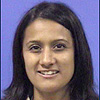 Fauzia Vandermeer, MD, Clinical Assistant Professor, and Jade Wong-You-Cheong, MD, Professor, both from the Department of Diagnostic Radiology & Nuclear Medicine, were among the co-authors on “Magnetic Resonance Enterography: State of the Art” in Inflammatory Bowel Diseases, 2014 Sep 12 [Epub ahead of print].
Fauzia Vandermeer, MD, Clinical Assistant Professor, and Jade Wong-You-Cheong, MD, Professor, both from the Department of Diagnostic Radiology & Nuclear Medicine, were among the co-authors on “Magnetic Resonance Enterography: State of the Art” in Inflammatory Bowel Diseases, 2014 Sep 12 [Epub ahead of print].
 Jiachen Zhuo, PhD, Assistant Professor, and Rao Gullapalli, PhD, MBA, Professor, Department of Diagnostic Radiology & Nuclear Medicine, were among the co-authors on “Intersession Reliability of fMRI Activation for Heat Pain and Motor Tasks” in Neuroimage: Clinical, 2014 Jul 22;5:309-321. Dr. Zhuo was also among the co-authors on “Accelerated 4D Quantitative Single Point EPR Imaging Using Model-based Reconstruction” in Magnetic Resonance in Medicine, 2014 May 6 [Epub ahead of print.]
Jiachen Zhuo, PhD, Assistant Professor, and Rao Gullapalli, PhD, MBA, Professor, Department of Diagnostic Radiology & Nuclear Medicine, were among the co-authors on “Intersession Reliability of fMRI Activation for Heat Pain and Motor Tasks” in Neuroimage: Clinical, 2014 Jul 22;5:309-321. Dr. Zhuo was also among the co-authors on “Accelerated 4D Quantitative Single Point EPR Imaging Using Model-based Reconstruction” in Magnetic Resonance in Medicine, 2014 May 6 [Epub ahead of print.]
